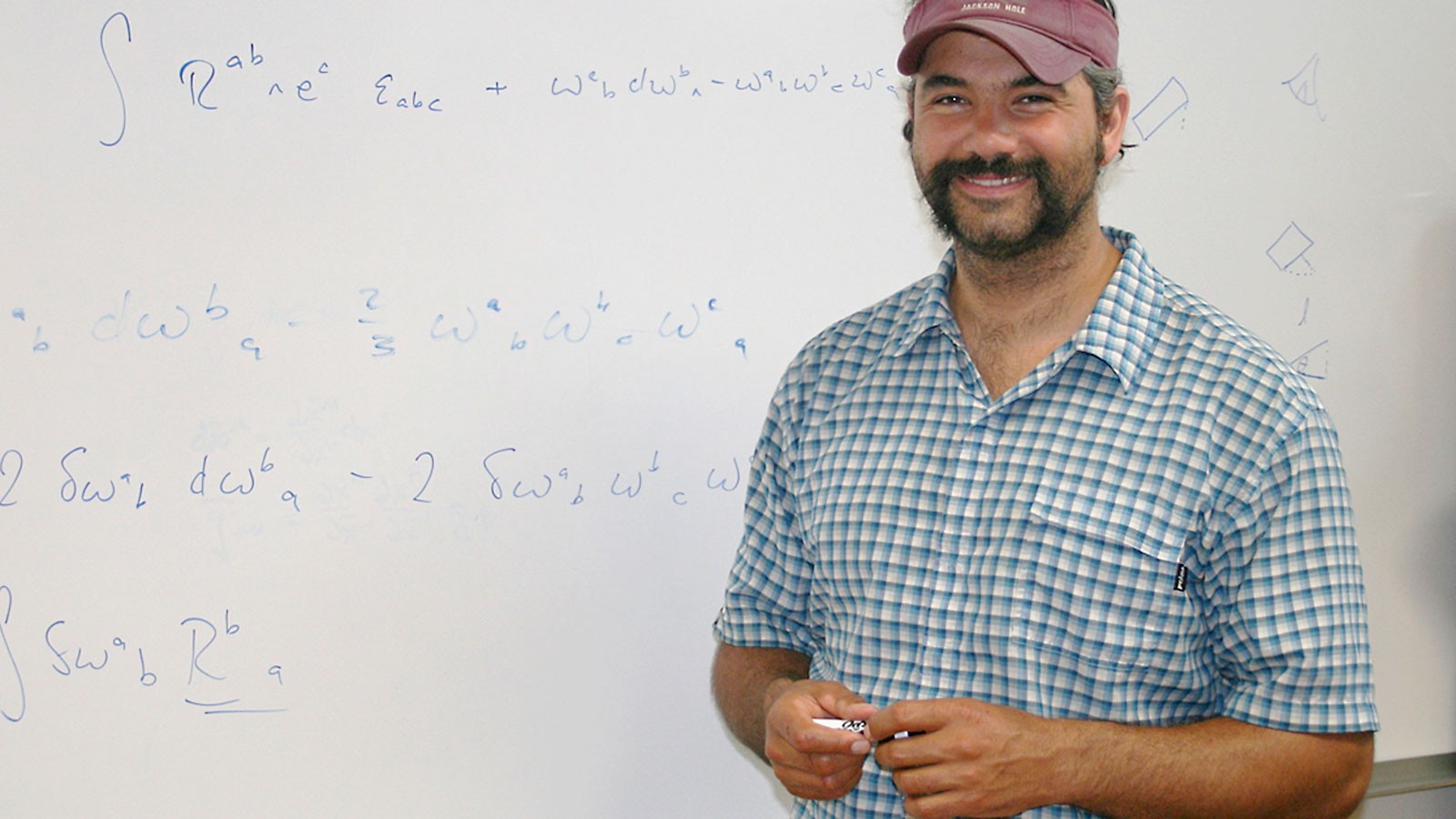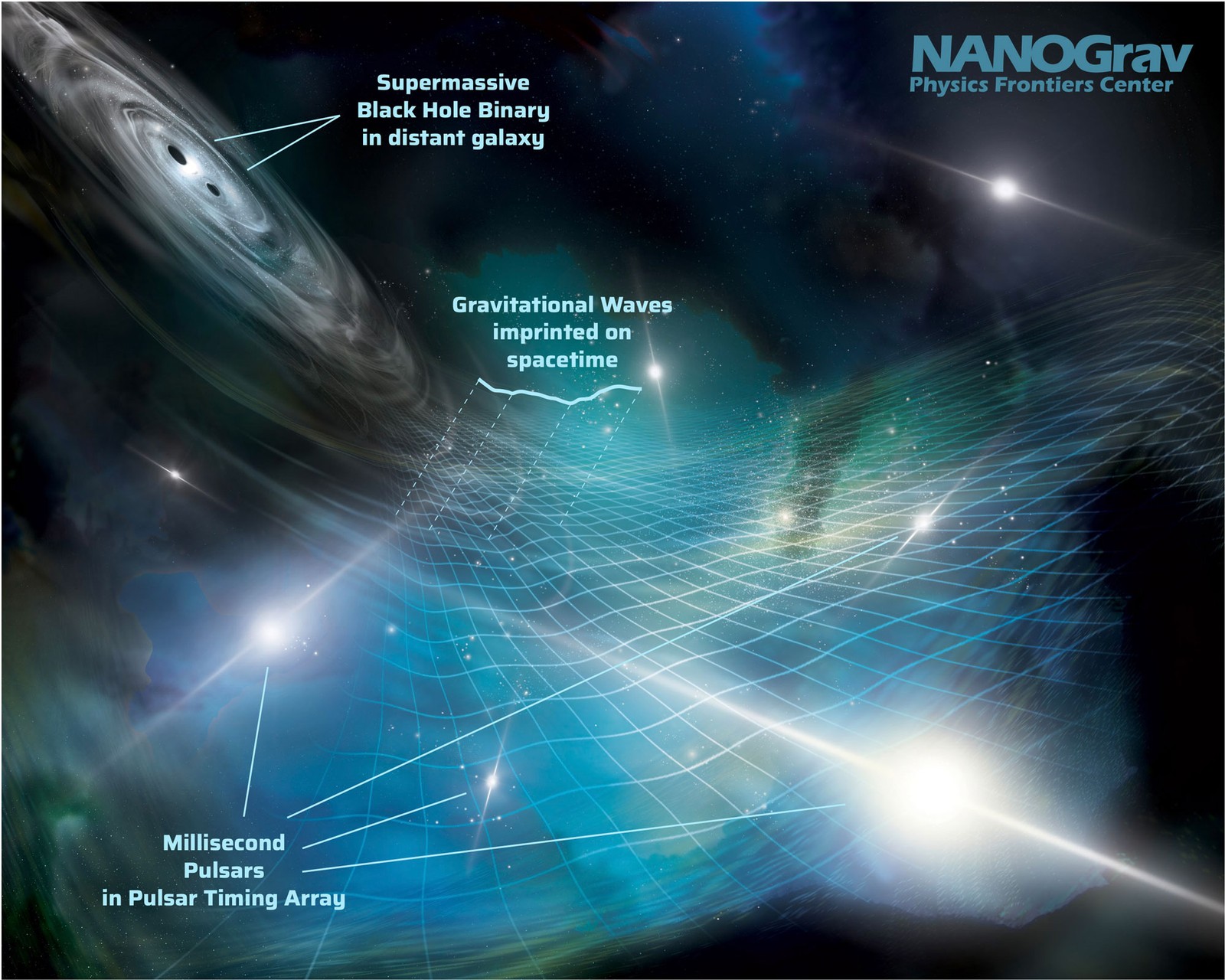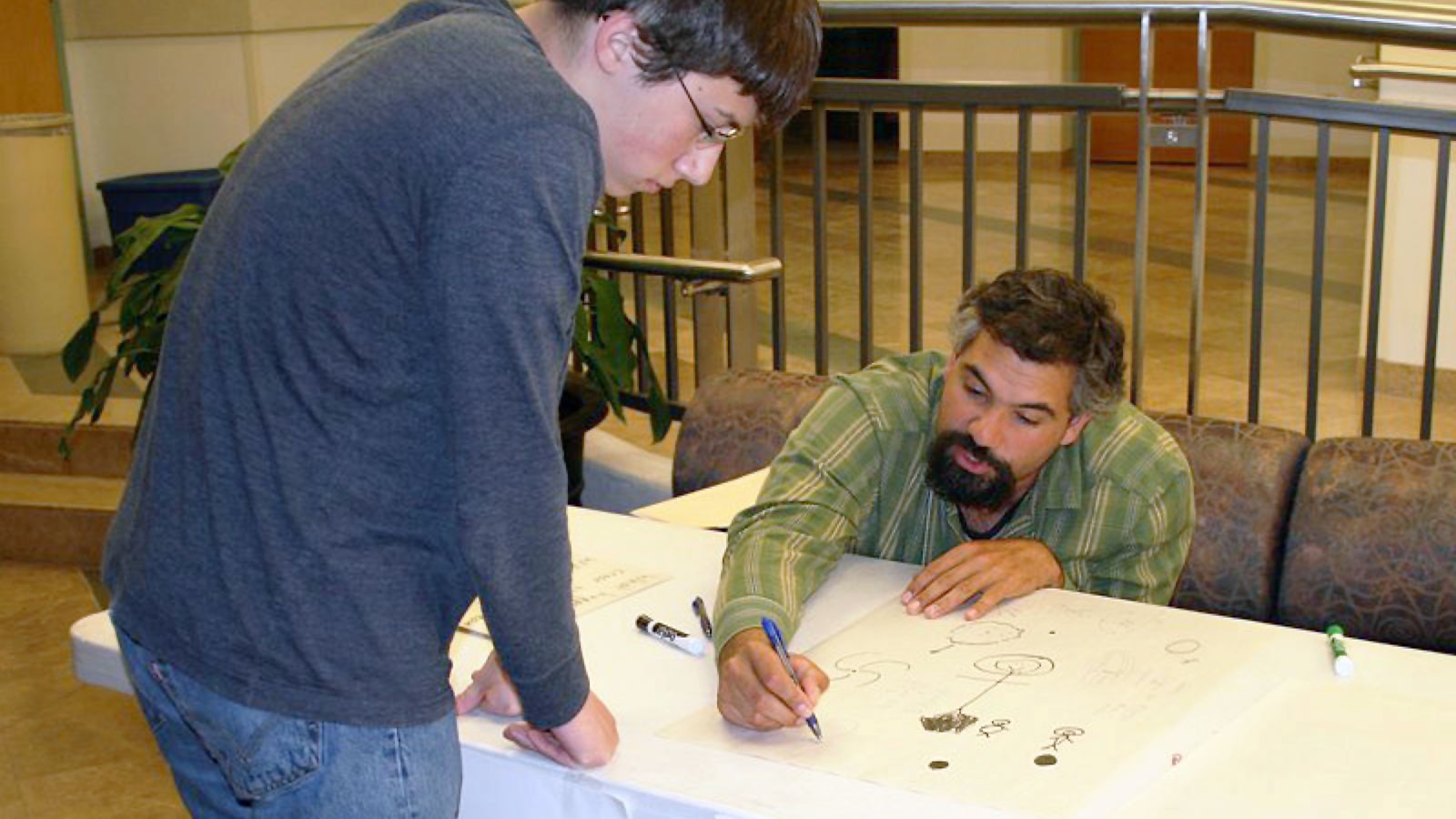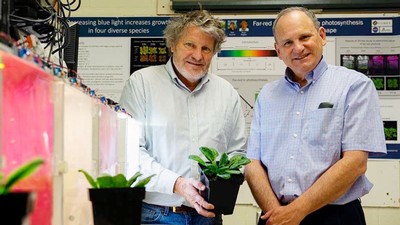USU Physics Alum on International 'NANOGrav' Team Reports New Gravitational Wave Findings
Jeffrey Hazboun is among researchers featured in a June 29 briefing from NSF-funded North American Nanohertz Observatory for Gravitational Waves Physics Frontier Center
By Mary-Ann Muffoletto |
USU alum Jeff Hazboun is among a team of researchers who announced new findings on gravitational waves.
Utah State University physics alum Jeffrey Hazboun is among a national team of scientists reporting breakthrough findings about gravitational waves that could reveal new information about supermassive black holes.
The research team at the National Science Foundation-funded North American Nanohertz Observatory for Gravitational Waves Physics Frontier Center, or NANOGrav, monitored pulsars — super-dense, fast-spinning cores of dead stars — to “hack the galaxy,” Hazboun said in a June 28 interview with National Public Radio.
“Using a pulsar array, we detected low-frequency gravitational waves,” said Hazboun, an assistant professor at Oregon State University. Hazboun completed a doctorate in physics from USU in 2014.
The team details their findings in a June 29 online briefing set for 1 p.m. Eastern time.
NANOGrav’s discoveries are reported in a series of open access papers released June 28, 2023, in The Astrophysical Journal Letters, based on data collected from about 70 pulsars over a 15-year span.
The team’s findings build on the pivotal February 2016 announcement by researchers at the massive Laser Interferometer Gravitational-Wave Observatory, known as LIGO, that they’d detected gravitational waves at high frequencies that vibrated antennas at its facilities in Hanford, Washington, and Livingston, Louisiana, that previous September.
NANOGrav’s discoveries allow wave detection at much lower frequencies, emanating from enormous black holes at the centers of colliding and merging galaxies.
Hazboun contacted his USU Physics faculty professors Jim Wheeler, Charlie Torre and Jan Sojka, and adviser Karalee Ransom, just prior to the June 28 announcement.
“I hope you all are well (and) I wanted to let you know that my collaboration is making a big announcement at NSF Thursday and releasing nine papers,” Hazboun wrote. “I thought USU’s College of Science would like to know an alum was heavily involved. We might get some attention and I wanted you to hear it from me.”
Hazboun completed postdoctoral fellowships in Texas and Washington with NANOGrav prior to joining Oregon State’s faculty.During his USU career, he excelled in research, teaching and outreach, and he was named the College of Science’s 2013 Graduate Student Teacher of the Year.
The expert kayaker who worked as a conservation biologist prior to graduate school was featured in a 2011 episode of the National Geographic Channel’s “Monster Fish” television program, where he recounted a Nat Geo-funded kayaking expedition in Russia’s Kamchatka Peninsula. During the show, he detailed environmental pressures facing the region’s salmon population, along with his experiences wrestling a 30-inch-long rainbow trout and observing brown bears “up close and personal.”
At Utah State, Hazboun was a featured speaker at USU’s Science Unwrapped, both in Logan and at Park City’s Swaner EcoCenter.
“I’m very happy to be among the faculty at Oregon State,” he says. “But I miss the carefree life of a Ph.D. student in Logan.”
At USU's Science Unwrapped in April 2012, Physics alum Jeff Hazboun, right, answers questions about black holes. The Oregon State University faculty member is among the NSF-funded NANOGrav team announcing new gravitational wave findings. (Photo Credit: USU/M. Muffoletto)
WRITER
Mary-Ann Muffoletto
Public Relations Specialist
College of Science
435-797-3517
maryann.muffoletto@usu.edu
CONTACT
Jeffrey Hazboun
Assistant Professor
Oregon State University
541-737-4631
jeffrey.hazboun@gmail.com
TOPICS
Research 881stories Alumni 182stories STEM 165stories Space 140stories Physics 99storiesComments and questions regarding this article may be directed to the contact person listed on this page.











